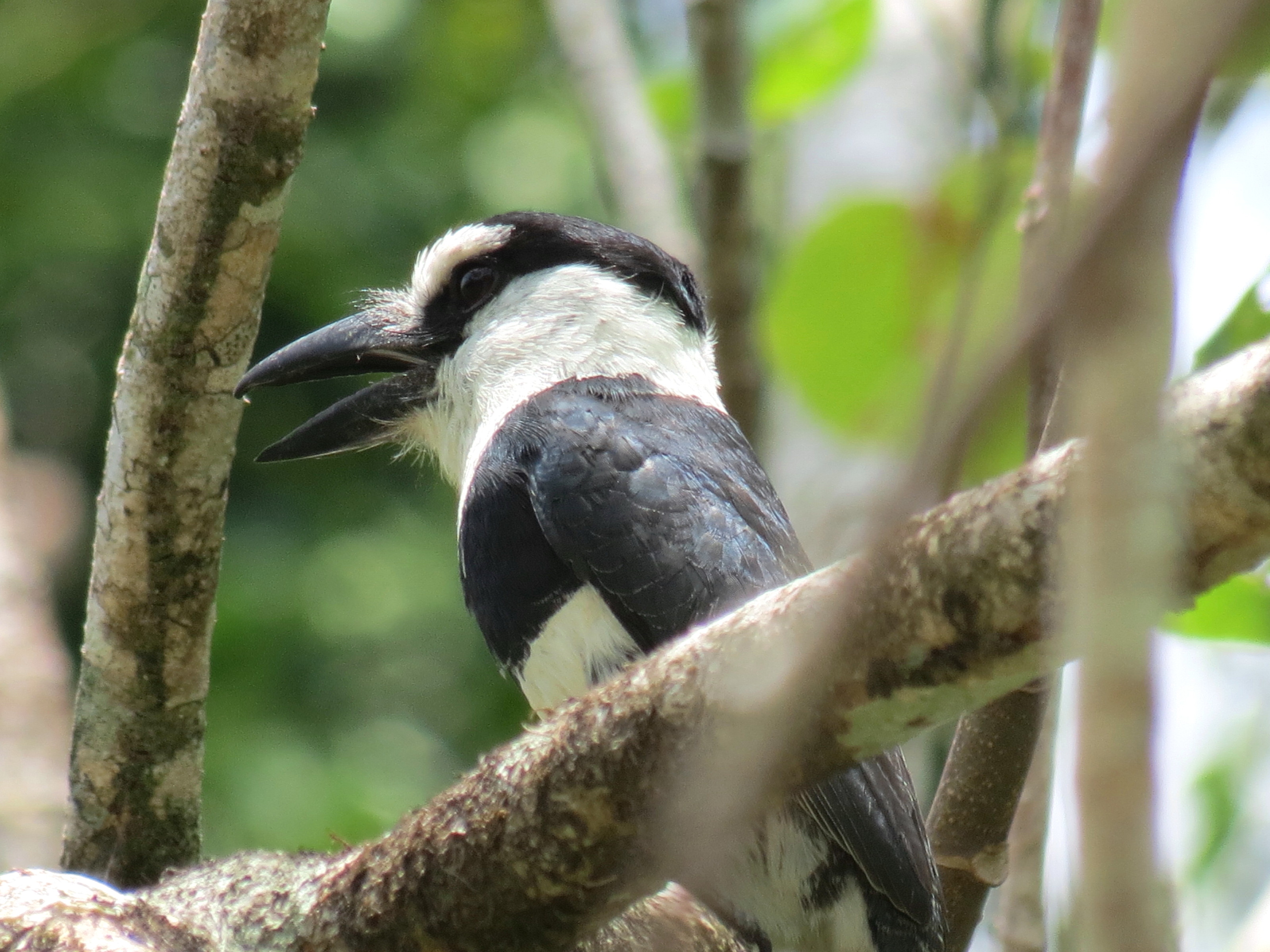
Notharchus macrorhynchos
TAXONOMY
Bucco macrorhynchos J. F. Gmelin, 1788, Cayenne. Forms a superspecies
with N. swainsoni of the Brazilian Atlantic forest.
Two subspecies.
OTHER COMMON NAMES
French: Tamatia а gros bec; German: WeiЯhals-faulvogel;
Spanish: Buco Picogordo.
PHYSICAL CHARACTERISTICS
11 in (25 cm); 2.9–3.7 oz (81–106 g). Black upperparts and
broad chest band, white forehead, collar, throat and belly.
Variable dark barring on flanks. Bill and feet black.
DISTRIBUTION
N. m. hyperrhynchus: Mexico south to Venezuela, Colombia,
Ecuador, eastern Peru, northern Bolivia, and western Brazil; N.
m. macrorhynchos: eastern Venezuela, the Guianas, and northern
Brazil south to the Amazon.
HABITAT
Humid to semiarid forest, open woodland, clearings, and plantations
(0–3,940 ft [0–1,200 m]).
BEHAVIOR
Pair territorial and sedentary; generally found perching stolidly
on high open branches, but otherwise inconspicuous.
FEEDING ECOLOGY AND DIET
Hunts at all levels, from ant swarms to upper canopy, preying
on large insects and small vertebrates; some vegetable matter.
REPRODUCTIVE BIOLOGY
Nests excavated by both pair members in arboreal termitaries,
usually 40–50 ft (12–15 m) up (occasionally 10–60 ft [3–18 m]).
Holes in the ground or in trees are also reported.
CONSERVATION STATUS
Not threatened: scarce in Central America, widespread and often
fairly numerous in South America.
SIGNIFICANCE TO HUMANS
None known.
Other popular Animals
Photo Gallery of - White-necked puffbird




 Animalia Life
Animalia Life